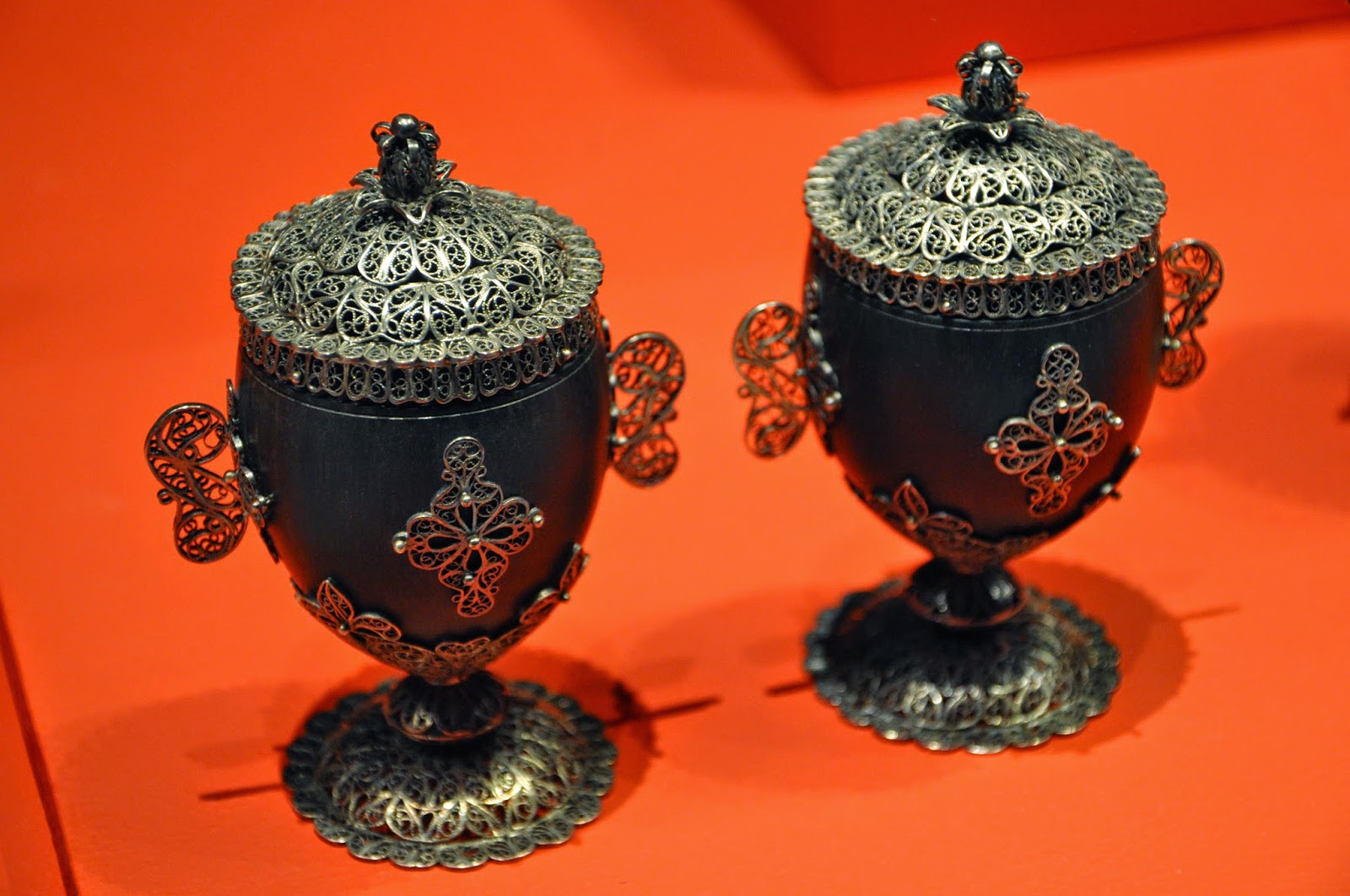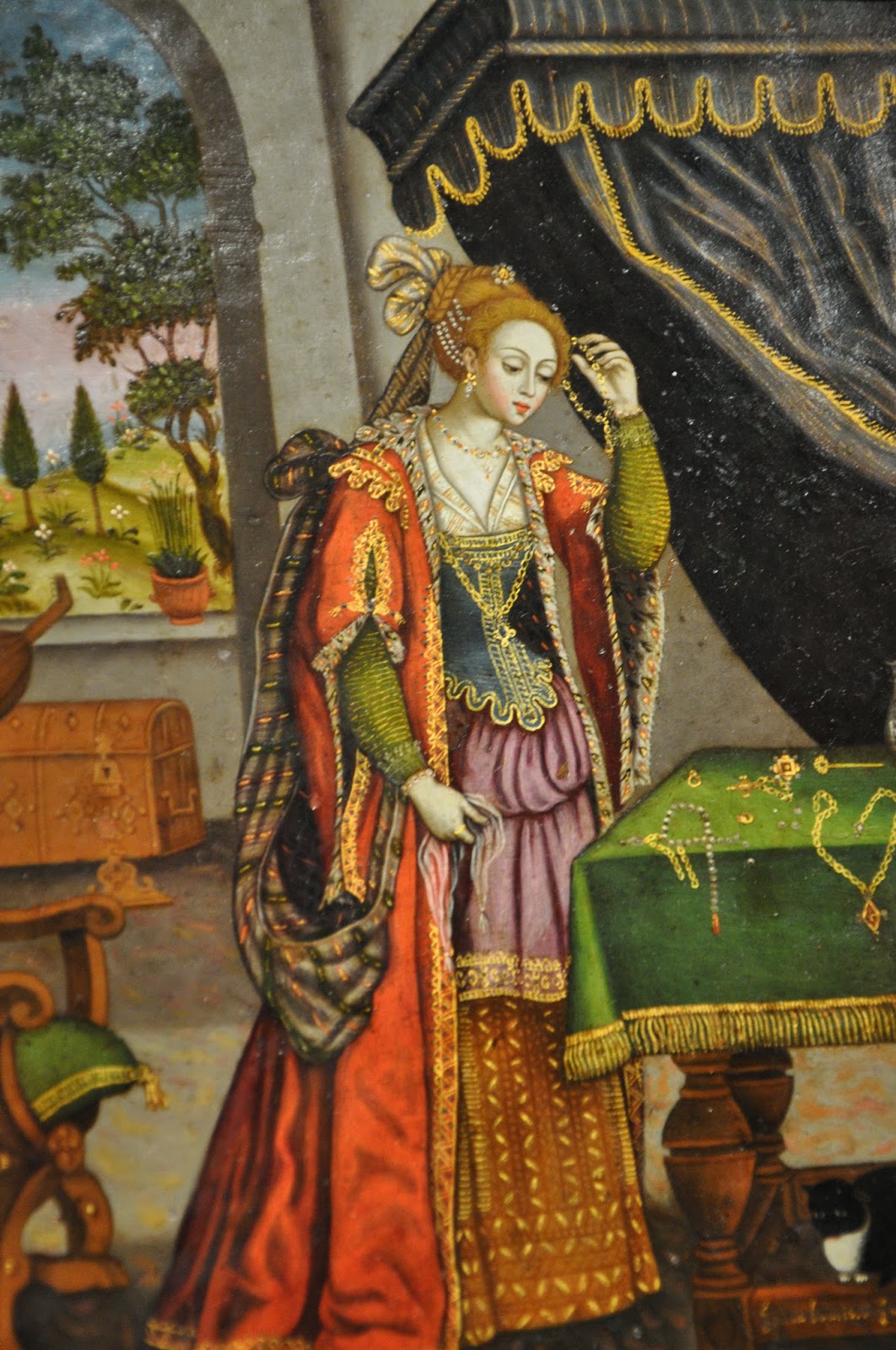Soon after having walked out of the "Infinisterra" exhibition I made it to the first floor where another temporary exhibition was being held, this time on a number of artefacts acquired by those who represented the Portuguese Regal crown and authority in India from the Malaca straits to the Java Seas, as well as the historical and social scenario of the epoch.
17th century dagger (kris) from Sumatra, Indonesia made of crucible steel, guilded silver and wood (left). 19th century dagger (kris) from Mindanao made of steel, silver, ivory, walnut wood and gold (right).
18th century sword (kasthana) from Ceylon (Sri Lanka) made of steel, silver gold, rubies and carnelian (left). 18th century sword (kasthana) from Ceylon (Sri Lanka) made of steel, silver, gold, rubies and wood) and dagger( (pihiya) from Ceylon (Sri Lanka) made of steel, silver, gilded silver, black coral and brass (picture on the right - first and third artefacts from left to right).


Late 19th century cruets and tray from Kutch , India made of silver (left). 17th century cups probably from Manila, Phillipines made of coconut shell and silver filigree (right).


Late 16th century casket from Gujarat, India made of tortoise shell. Painted and gilded decoration in silver and gold carried out in the province of Guandong, China (left). 17th century silver filigree casket possibly from Goa, India (right)
17th century filigree casket possibly from either Southern China, Manila or Jakarta.
Reliquary casket of St. Francis Xavier from Goa, India made of silver, wood and glass.
Casket from Gujarat, India dating back to the second half of the 16th century made in tortoise shell and silver.
17th century ivory and silver filigree comb probably form Manila, Philippines (left). 17th century ivory and silver primer flask from Ceylon (Sri Lanka).


St. Paul's painting with frame. The painter is unknown though it is believed to have been Goan and painted in the first half of the 17th century. The frame is made of teak wood with silver and silver filigree decoratative motifs.
17th century representation in ivory of Our Lady of the Immaculate Conception from Manila, with a base made in silver and silver filigree. pair of altar flowers from Southern China (probably Guangzhou) dating to the the 17th century.
Late 17th century Altar crucifix from Goa, India made of silver, wood and ivory.
Early 17th century processional cross from Goa, India made of silver, ebony and ivory.
17th century St. Mary Magdalene plaque from Goa, India made in ivory, ebony and silver.
Virgin Mary and Child - 1657 painting on copper byJosefa d'Ayala Cabrera, known as Josefa de Óbidos (left). Late18th century painting of Saint Mary Magdalene made by Sister Joana Baptista (right)
Salvator Mundi - painting of young Jesus made ca. 1660-1670 by Josefa de Óbidos
Early 17th century ivory representation of a noblewoman.
Portrait of Catarina de Bragança, queen consort of Englans, Scotland and Ireland made by John Riley in the 17th century.
18th century necklace (moedanchem-gantlem) from Goa, India made of gold, a resinous mixture and cotton (left). Late 18th century decorative comb from Goa, India made of gold, silver and crystal rocks (right).
Silver and gold jewellery studded with precious stones dating back to that epoch.
I thought the exhibition was very interesting and the number of artefacts, pertaining to private and public collections, very well sellected so as to illustrate an epoch and the widespread use of jewels and valuable materials even in religious manisfestations..






























No comments:
Post a Comment